It's the International Day of Women and Girls in Science and we salute them! Here are some photos of projects that students entered into our Student Annual last year under the category of Science: Art. These talented students, all from East Hampton High School under the tutelage of Dr. Paul Rabito, created both art inspired by their visit to LongHouse and a scientific thesis based on their visit! Pictured here are some of the projects created by the young women scientists/artists in last year's Annual.
"Endocytosis" by Mikela Junemann

"On a recent AP Biology field trip to LongHouse, the Amphitheater reminded me of a cell engulfing a foreign substance through vacuoles otherwise known as endocytosis. This process inspired me to create a sculpture of nails and yarn creating a picture that looks very similar to the Amphitheater and endocytosis."
"Peter's Pond Ecosystem" by Emily Hugo

"Peter's Pond Ecosystem" by Emily Hugo. "There is a clear harmony, both visual and organismal, throughout Longhouse. The plants surrounding the pond create energy through photosynthesis which consumers rely on, creating the foundation of the food web. The cooperation between all organisms in Peter’s Pond mirrors the integration between nature and art present at Longhouse. Just as art has been integrated into the environment at Longhouse, many plants have been introduced, cooperating with the surroundings to form a unique ecosystem.
"Internal Beauty" by Kendall Stedman

"When I went to Longhouse with my AP Biology class, the main thing that drew my eye was the landscape, but specifically the flowers. From growing up always around flowers, seeing them always puts me in a calm and tranquil state of mind. While there, I saw a long of a tree that was recently cut down, and I kept staring at the rings of the log. In biology, we learned that each new ring of a tree, is new xylem and phloem, which I never knew. Each year the tree must make new xylem and phloem in order to survive and create new hard working cells. I decided to create my art project with the idea of flowers, and the xylem and phloem that help them be the beautiful organisms they are. My purpose behind doing this was to show that the rings of the tree to which I painted on, are the old xylem and phloem which makes these beautiful flowers. The sugar in the paint represents the sugar from the phloem, while the blue background represents the water from the xylem. Towards the end of the wood, I decided to put a few small tubes, red being the phloem and blue being the xylem, to represent the actual tubes."
"Microbial Symbiosis" by Olivia Davis

"Throughout my education, I have visited the Long House reserve many times and have always noticed a certain harmony between nature and art. While on an AP Biology, I saw the tree that inspired my piece, I immediately wondered what was going on-other than what is presented to the eye-to allow the tree to flourish. This is what most inspired me to create a model of a natural mutualistic(or symbiotic) relationship. In this piece, I created a model of the symbiotic relationship between a tree and rhizobacteria, which fix nitrogen for plants and in turn, receive nutrients and a home."
"Pool Electrophoresis" by Emma Silvera

"On a recent trip to LongHouse with my biology class, I was inspired by the pool located near the house. I made an illustration of the pool to demonstrate how gel electrophoresis separates DNA molecules by their size."
"Imperfectly Related" by Maya Poblete

"Upon my visit to LongHouse with my AP Biology class, I was intrigued by Will Ryman's adaptation of his internationally acclaimed exhibition, "The Roses". The sculpture, so vibrantly contrasted against the natural tones of the gardens that surround it, displayed roses in different stages of bloom in an exaggerated scale. I chose to relate my knowledge of the human circulatory system to create a piece that drew parallels to the vascular system found within plants. More specifically, the xylem and phloem. Through reflecting on Ryman's theme of revealing the "imperfect and temporary nature of all things", I found it only fitting to correlate this message to the human existence, hence the depiction of a human hand in the foreground of my piece."
